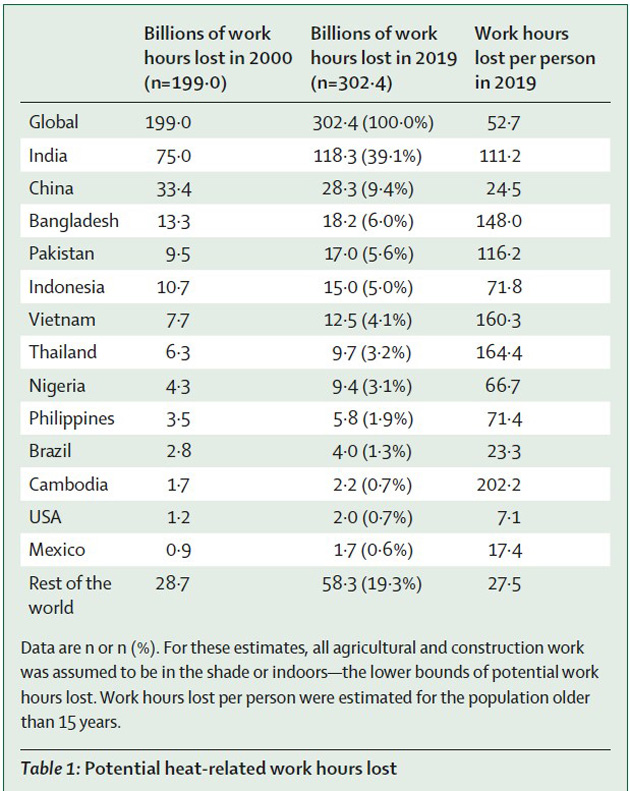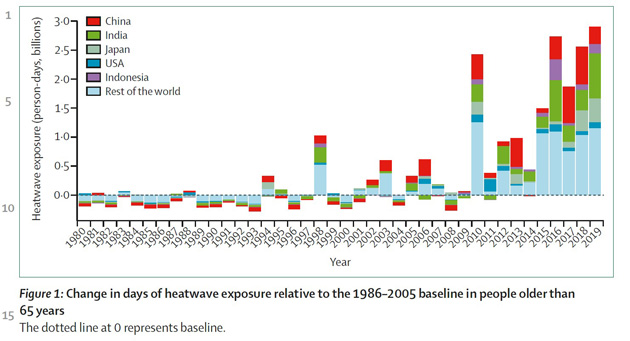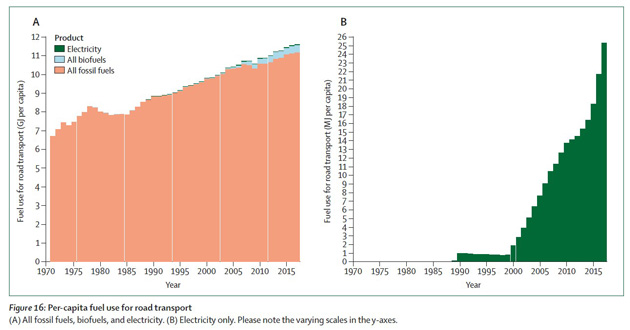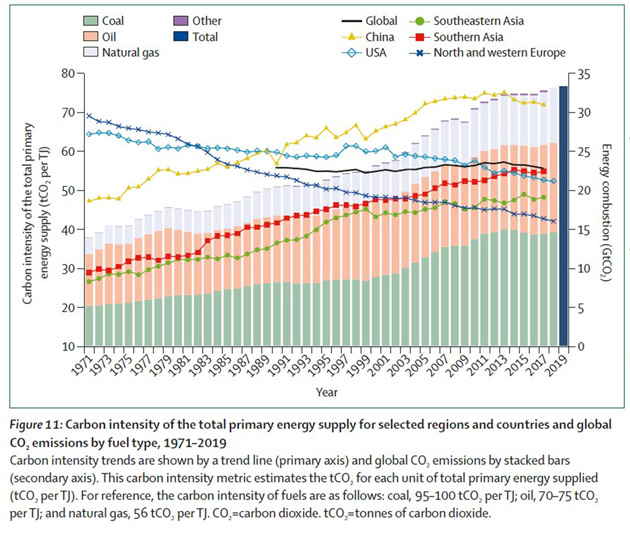‘Pandemic a chance to correct course on climate and health’
- The latest Lancet Countdown report identifies how Covid-19 has created an opportunity for policymakers to work on health and climate change issues together to minimise diseases and deaths.

The fifth edition of the Lancet Countdown Report (LCR5) has been released on the same day that the World Meteorological Organisation reported the earth is now 1.2 degrees Celsius warmer than in pre-industrial times. As the Covid-19 pandemic continues, the Lancet report shows how climate change threatens to reverse the gains from 50 years of medical advancement.
Prepared by over 120 experts from around the world, this year’s report is pegged to 43 global indicators, some of particular interest to South Asia. India has been identified as one of the countries of key concern.
The report says, “During the past 20 years, there has been a 53.7% increase in heat-related mortality in people older than 65 years, reaching a total of 296,000 deaths in 2018;” 302 billion work hours have been lost as productivity has fallen.
The cost of these heatwaves, in terms of both lives and livelihood, are of particular concern to India. “India and Indonesia were among the worst affected countries, seeing losses of potential labour capacity equivalent to 4-6% of their annual gross domestic product.”

These losses were often in sectors like agriculture, in which labour is frequently paid little enough as it is, driving home the point that it is the poor that pay the highest costs for harm that they have not caused.
The costs are spread across countries. But LCR5 found that when normalised by GDP, the cost of climate-linked economic losses in 2019 was nearly five times higher in poorer countries. Furthermore, “just 4% of these losses were insured in low-income economies compared with 60% in high-income economies.”
Nor are these numbers likely to go down. “Eight out of the 10 highest ranking years of heatwave exposure in India have occurred since 2010,” LCR5 noted. As fossil fuel use continues to go up, with carbon intensity increasing in South Asia, Southeast Asia and China (though declining elsewhere), the heat is only likely to rise in the near future.

Global coal use for energy increased by 1.2% from 2017 to 2018, and, although remaining below the 2014 peak, use of coal for energy has risen by 74% overall since 1990. China, responsible for 52% of global coal consumption, has driven the rise.
Air pollution killed nearly half a million Indians in 2018, out of seven million deaths worldwide, the report says. “Coal combustion by households, power plants and industry was responsible for almost 100,000 of these [deaths in India]”, it adds.

Good news from renewable energy
Not all the news is grim, though. The number of jobs in the renewables sector is rising, and almost caught up with the number in the fossil fuel industry in 2019 (11.5 million and 12.7 million respectively). The number of electric vehicles on the road is striking.
Much of this may be fuelled by public interest. From 2018 to 2019 the coverage of climate change in major newspapers in 36 countries increased by 74% according to LCR5, while the coverage of climate change and health increased by 96%.
Crucially, governments seem to be listening, with their Nationally Determined Contributions (NDCs) as part of the Paris Agreement linked to climate change and health. Surveys are being conducted, policies being put in place, and spending on healthcare is improving even if the overall amount is still low.
LCR5 notes, “India’s per capita spend on health adaptation is just $0.80, but has risen from $0.60 per capita in 2015/16.”
Not enough
The positive trends are nowhere near enough. The costs of the climate crisis are high in all sorts of ways. The report notes, “145 million of the world’s population could be exposed to an average global sea level rise of 1 metre, a value rising to 565 million people with an average sea level rise of 5 metres.”
Countries are not prepared for this scale of displacement, and key cities surveyed in developed countries suggest they are deeply vulnerable to climate disasters.
Worst is the impact on agriculture. With rainfall and weather patterns changing, crops are not getting the time to mature properly. Yields in maize, wheat, rice and soybeans – all critical to nutrition – are falling.
Governments are still working in silos, not fully linking up issues of health, migration, agriculture and health.
The Covid-19 pandemic has come as a wake-up call – as well as a warning of what may happen if the climate crisis leads to more zoonotic diseases (for example, the spread of the dengue-carrying mosquito has increased).
LCR5 estimates that carbon emissions have dropped about 8% due to the pandemic, but if countries start where they left off, then the brief respite will do little good.

The report emphasises that the global community must use this moment to reflect and “grow greener” after the pandemic. The question is whether policymakers are listening.
Responding to the Lancet report, Zulfiqar Bhutta, founding director of Aga Khan University’s Institute for Global Health and Development and a member of the Pakistan Prime Minister’s Health Task Force, told The Third Pole, “Climate change poses existential threats to Pakistan with serious impacts on its future development. It also substantially increases risks for new and emerging infections and poses risks for global security.”
This article was first posted on The Third Pole.
This work is under Creative Commons’ Attribution-NonCommercial-NoDerivs 2.0 England & Wales License.







